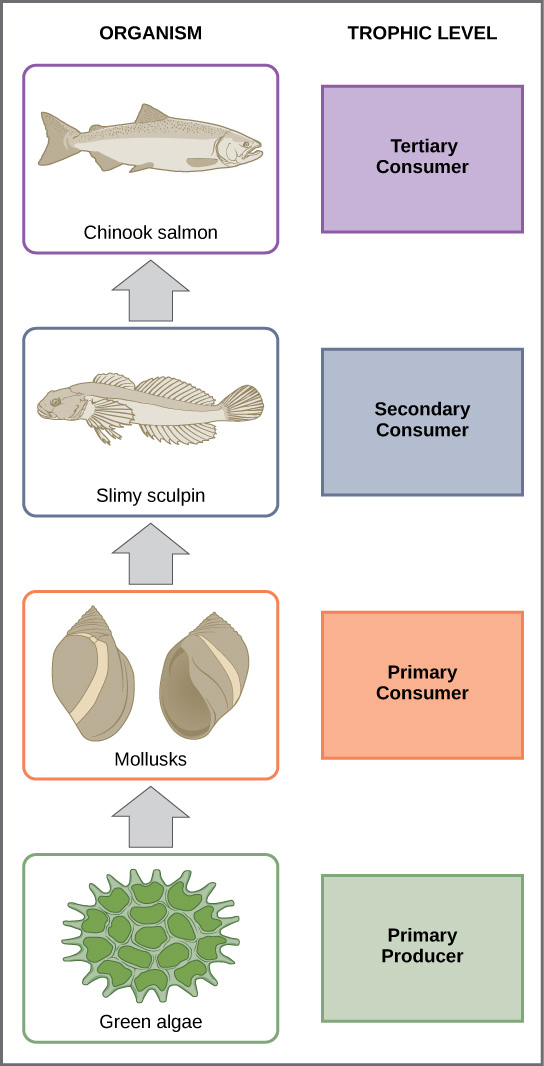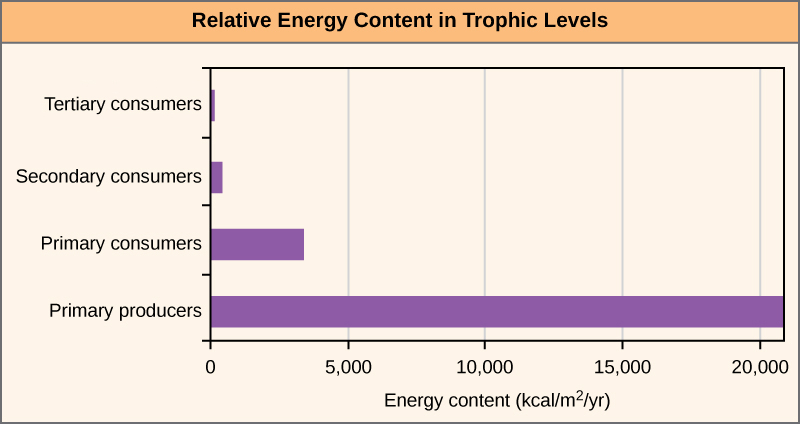| << Chapter < Page | Chapter >> Page > |
In many ecosystems, the bottom of the food chain consists of photosynthetic organisms (plants and/or phytoplankton), which are called primary producers . The organisms that consume the primary producers are herbivores: the primary consumers . Secondary consumers are usually carnivores that eat the primary consumers. Tertiary consumers are carnivores that eat other carnivores. Higher-level consumers feed on the next lower tropic levels, and so on, up to the organisms at the top of the food chain: the apex consumers . In the Lake Ontario food chain shown in [link] , the Chinook salmon is the apex consumer at the top of this food chain.
One of the classes of consumers deserves special mention; these are the decomposers , which break down waste or dead organic matter. Fungi and bacteria are decomposers in many ecosystems, utilizing the chemical energy in dead organic material to fuel their own metabolic processes. Some of the decomposers are also known as detritivores (literally, detritus- or debris-eaters). These are generally multicellular animals such as earthworms, crabs, slugs, vultures, etc. which not only feed on dead organic matter, but often fragment it as well, making it more available for bacterial or fungal decomposers. These organisms have a critical role in ecosystems, and are one of the main mechanisms by which nutrients get recycled for other organisms to use again. Even apex consumers such as the Chinook salmon have to die sometime, and the nutrients in their bodies can nourish a host of detritivores and decomposers.

One major factor that limits the length of food chains is energy. Approximately 90% of the energy entering the system (from sunlight converted to carbohydrates by the primary producers) is lost as heat between one trophic level to the next, as explained by the second law of thermodynamics. Put another way, only 10% of the energy in a lower trophic level is transferred to the next trophic level. Thus, after a limited number of trophic levels (energy transfers), the amount of energy remaining in the food chain may not be great enough to support viable populations at yet a higher trophic level.
The loss of energy between trophic levels is illustrated by the pioneering studies of Howard T. Odum in the Silver Springs, Florida, ecosystem in the 1940s ( [link] ). The primary producers contained 20,819 kcal/m 2 /yr (kilocalories per square meter per year), the primary consumers contained 3368 kcal/m 2 /yr, the secondary consumers contained 383 kcal/m 2 /yr, and the tertiary consumers only conained 21 kcal/m 2 /yr. Thus, there is little energy remaining for another level of consumers in this ecosystem.


Notification Switch
Would you like to follow the 'Principles of biology' conversation and receive update notifications?